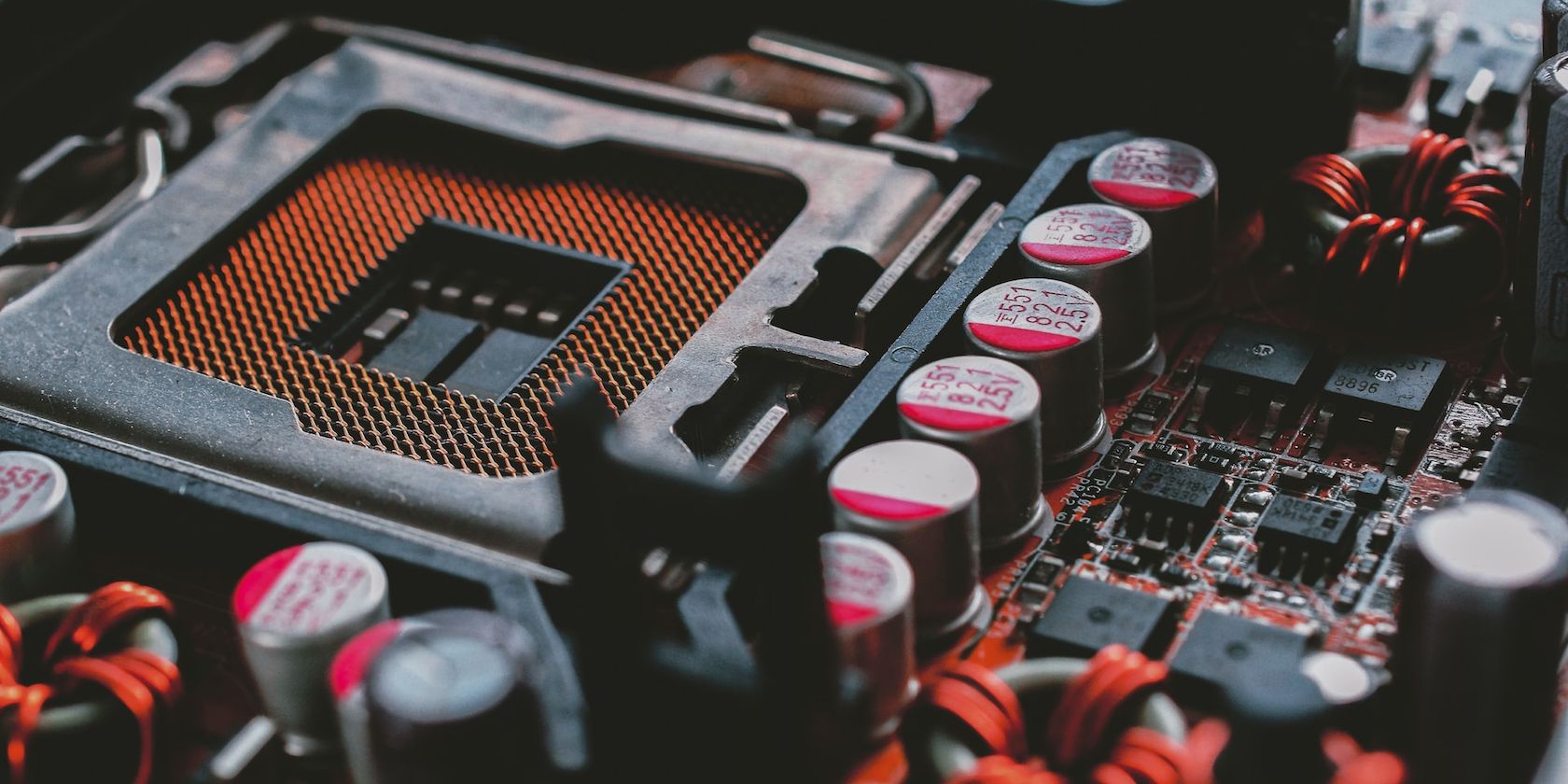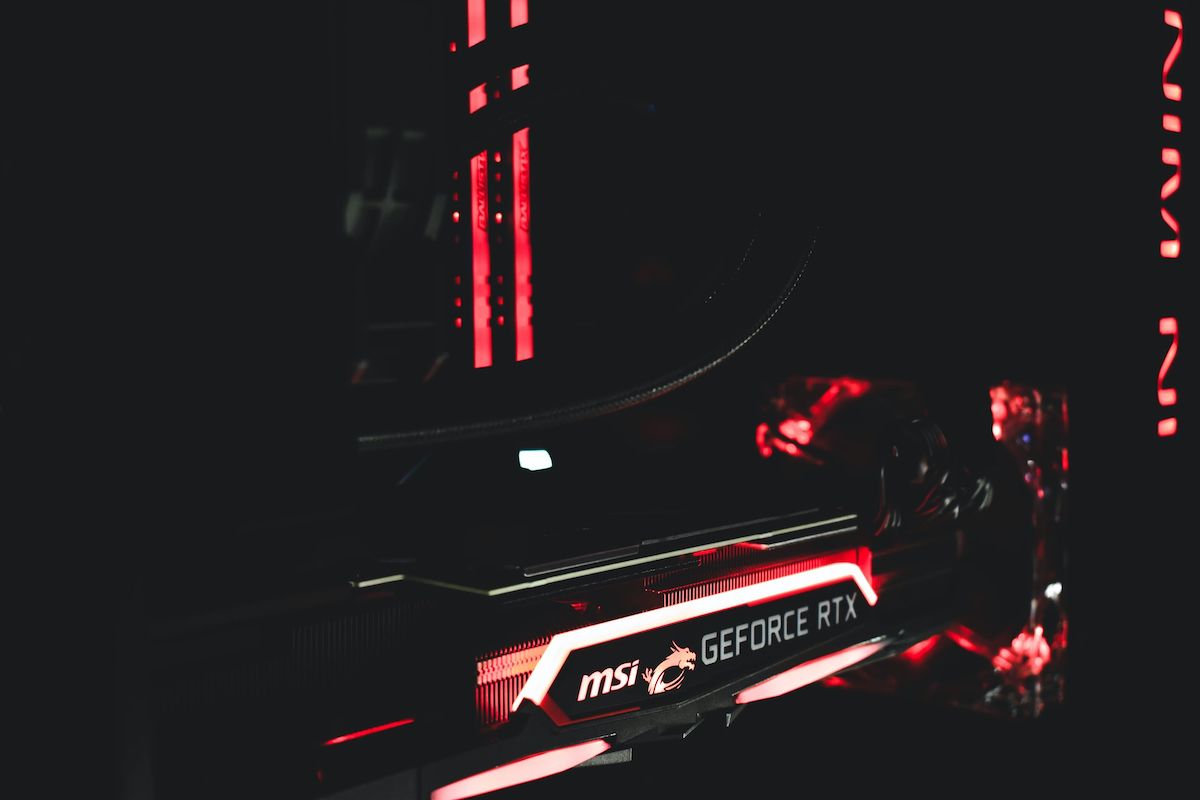You bought a new motherboard that could push your CPU to the limit, but when you opened it, you saw something out of the ordinary. Instead of a single CPU connector, your motherboard came with two CPU connectors.
So, why does your motherboard have an additional CPU connector? Can it help you push your system to its limits? Well, let's find out.
How Is Power Transmitted to Your CPU?
Before understanding why your motherboard has dual CPU power connectors, it's important to understand how power is transmitted to your CPU. Put simply, electricity travels from the power socket to the CPU, but the current from your socket can't be used to power the electronics in your computer. Therefore, your system has a power supply unit (PSU).
The main goal of the PSU is to convert the alternating current (AC) received from the socket to direct current (DC). This current can then power the various components on your motherboard. That said, the components on your motherboard have different power requirements.
To solve this problem, the PSU has several output connectors designed to power different electronics on your motherboard. These connectors usually supply 12V, 5V, and 3.3V.
One of these connectors powers the CPU and offers a voltage of 12 volts. However, it can't be used to power the CPU directly, as such high voltages would fry the transistors. Therefore, the energy received from the CPU connector is sent to the Voltage Regulator Modules. These modules translate the 12 volts received from the PSU to a range of 1 to 1.5 volts, which then power your CPU.
How Much Power Can a CPU Connector Deliver?
The CPU connector is responsible for delivering power to the CPU. If this power is insufficient, then the CPU won't be able to deliver its peak performance.
So how much power can a CPU connector deliver?
Well, it depends on the number of pins your connector comes with. A higher number of pins enables the connector to deliver more power. Most motherboards come with a four-pin connector or an eight-pin connector, but in some cases, motherboards can use two connectors, such as two eight-pin connectors or a single eight-pin and a four-pin connector.
Eight Pin vs. Four Pin: Which Delivers More Power?
The four-pin connector on your motherboard comes with two 12-volt and two ground pins, while the eight-pin connector features four ground and four 12 v pins. Each of the pins in a connector is capable of delivering a maximum current of 7 amps. Given the 12 volts supplied by the pins and the 7 Amps current, a single pair of connectors can deliver 84 watts (12*7) of power. Hence, a four-pin connector can deliver 168 watts (84*2), while an eight-pin CPU connector can deliver 336 watts.
Using the same logic, we can conclude that two eight-pin CPU connectors can deliver 672 watts of power, while an eight-pin and a 4-pin configuration can deliver 504 watts.
How Much Power Does Your CPU Need?
The CPU on your system performs tasks by turning switches on and off. These switches are known as transistors, and the rate at which these transistors switch defines the performance your CPU delivers. Known as the clock frequency, the transistor switching rate also defines your CPU's power consumption. So, if your CPU is running at high frequencies, it will draw more power, while lower frequencies will reduce the power consumption of your CPU.
Due to this, the power consumption of a CPU is variable, and it depends on the frequency your processor is running, which is defined by the workload on your CPU.
Understanding CPU Power Consumption
As explained earlier, the CPU does not draw constant power from the CPU connector. Instead, the power draw varies based on the clock frequency. Most CPUs have two distinct CPU frequencies: the base clock frequency and the turbo frequency. When the processor is not performing computationally intensive tasks, it runs at the base frequency and consumes less power. On the contrary, when the system is pushed to the limits, it increases the frequency to the turbo frequency.
For example, Intel's flagship processor Core i9-13900k offers a 3GHz base frequency on its performance cores while consuming 125 watts of power. However, this number increases to 253 watts when the frequency bumps to 5.80GHz (its maximum boost clock speed). Also, technologies like Thermal Velocity Boost and Adaptive Boost increase the clock frequency across multiple cores when conditions for processor temperature and current draw are met, increasing the power a processor draws.
The numbers for power draw above do not consider overclocking, and the power drawn by processors can increase exponentially when overclocking is enabled.
On the other side of the spectrum, processors like the Intel Core i3-13100 consume 60 to 89 watts of power while running at base and turbo frequencies, respectively. Therefore, if you look at it, CPUs can draw anywhere from 60 to 250 watts based on their computational capabilities and Thermal Design Power (TDP).
Why Does Your Motherboard Come With Two CPU Connectors?
As explained earlier, a high-end CPU can consume 253 watts, while an 8-pin connector can deliver 336 watts. Therefore, if you look at it, a single CPU connector is enough for any CPU (bar high-end server units, workstations, etc.).
But there is a problem with this configuration. You see, the wires supplying power to your CPU during peak loads will carry seven amps each. Due to this, an 8-pin connector with four 12-volt pins will pull a total of 28 amps, and such high currents will generate a lot of heat. To put things into perspective, the heat generated in a current-carrying conductor is proportional to the square of the current flowing through it.
Therefore, to prevent excessive heating due to high current flow, Intel's Desktop Platform Form Factors Power Supply [PDF] recommends splitting current on 12-volt rails when the current goes above 20 amps.
To meet these requirements, motherboards come with two CPU connectors, as high-performance CPUs can draw currents above 20 amps when pushed to the limits.
What Are the Advantages of Dual CPU Connectors?
There are several advantages of having a motherboard with two CPU power connectors. Given below of the advantages these additional connectors offer:
- More power delivery: With dual CPU connectors on your motherboard, the PSU can supply high amounts of power to the CPU, enabling users to push their system by overclocking them.
- More stability: With dual CPU connectors, the motherboard can deliver power more stably. Current can be split between two connectors to keep the heat dissipation low, offering stable power delivery to the CPU.
Do You Need a Motherboard With Dual CPU Connectors?
A dual CPU connector on your motherboard can push up to 672 watts of power. Although a modern CPU does not require so much power, a dual CPU connector can help deliver power in a more stable manner.
Therefore, a motherboard with dual CPU connectors is recommended if you want to push a high-end CPU to the limits by overclocking it. On the other hand, if you use a mid-range CPU that does not need high amounts of power to function, a motherboard with a single connector should be enough.


